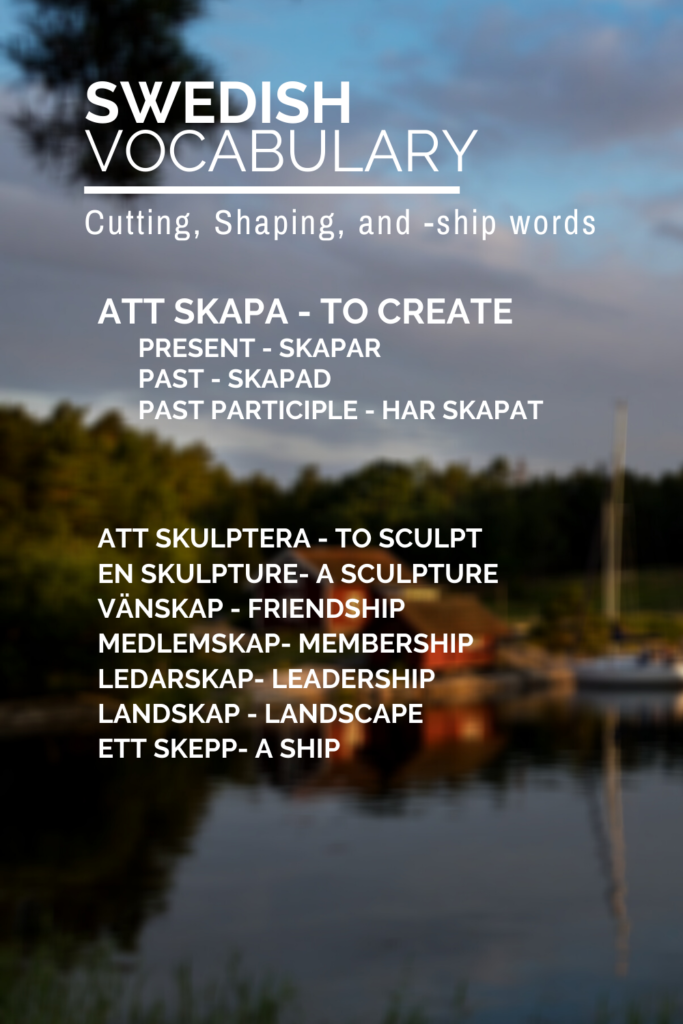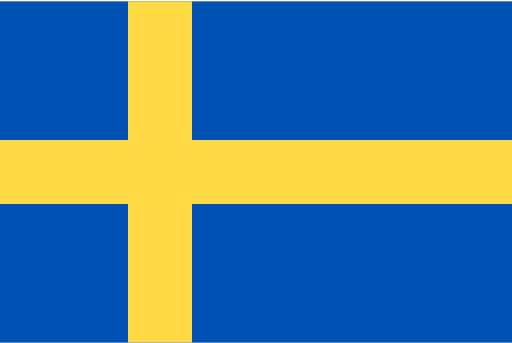Hej allihopa! Just wanted to say thanks to everyone for the awesome response to these super nerdy English to Swedish etymology posts. I really didn’t expect that many people to enjoy them, but I will definitely keep writing more! I hope it helps your progress in learning Swedish as much as it does mine.
Yesterday I posted about various words relating to writing, scratching, cutting things. I realized those only scratched the surface (hah!), so I want to continue that theme with another cluster of words that still come from the same roots, but relate more to cutting in the sense of shaping things. Once again, I’m not a professional linguist so please chime in if something is wrong, or if you want to expand on a topic.
Writing and Cutting Words
We already looked at skriva (swedish, to write) and it’s relation to cutting or scratching with a tool, but there is another important SK word that shares a distant root: The Swedish verb “skapa” (to create).
If you think about how a craftsman may cut, chisel, or shape a creation, you can see the relationship between “skapa” and the rest of the cutting words I wrote about in my previous post. I want to expand on the history of this however, because there are a few more forms I didn’t expect to be related.
Going back to the reconstructed Proto Indo-European language (the ultimate ancestor of the Germanic languages, including Old Norse, Old English, Latin, and many many more) there are a few important verb prefixes: “sek-” (to cut, or cut off)“ and *skab-” (“to cut, split, hew, shape”) that form the basis for many of the words I can find for cutting, shaping, and creating. One sense of “*skab-” led to the early germanic word “*skapjaną” (to make, create, shape).
From here Old Norse took “skapa” (to create) where it has remained nearly unchanged into modern Swedish. Old/Middle English split off and underwent one of the common sound and spelling changes to “scheppen”, and finally to the Modern English “shape”, as in “the sculptor shapes the clay”. An interesting side note here – you may pick up on the similarity between “sculpt”, “skapa”, and “shape”. There is a related Indo-European root “*skel-”, which also meant “to cut”, but with more of an emphasis on splitting, separating, or distinguishing something.
There are a few more mutations of this original word, but one descendant led to a Latin word “sculpo” (carve or chisel in stone), which in turn gave English “sculpt” and “sculpture”, and Swedish the nearly identical “skulptera” and “skulptur”. That other more basic Indo-European root “sek-” appears to be widespread through Latin, and led to shared English/Swedish words like “section/sektion” and “dissect/dissekera” although sometimes it becomes unclear whether the words came from the same root or were borrowed into Swedish from English.
Shaping word endings
To take this information and give it a more practical Swedish learning use, you may notice quite a few Swedish words that end in “-skap”. It gets a bit complex to trace back completely, but in nearly every case you see this ending you can translate to English as the suffixes “-ship”, or “-scape”. A few examples are: “vänskap/friendship”, “landskap/landscape”, “ledarskap/leadership”, “medlemskap/membership”, and the list goes on and on. An easy way to remember that -ship/-skap/shape connection, is that you can literally think of a word like “vänskap” as “the shape of how we are friends”, or “landskap” as “the shape of the land”. All of these retain some sense of being shaped, created, or a shaped state of being.
Keeping the language shipshape
To finalize things and keep this post from becoming a book, I just want to point out the difference between the suffix “-ship” meaning shape, and a sailing ship. As far as I can find there was another old Germanic word “skipą” which descended from a word meaning a hollowed out object. We could probably think of the cutting sense as “scooping” in this case. This word led to the Old Norse “skip” (a sailing ship), and the Swedish “skepp”. English followed it’s habit of changing SK sounds to SH sounds, and went something like “scip” – “schip” – “ship”. But we can still find that Old Norse influence today in words “Skipper” (the captain of a boat).
Thanks for reading and I hope you continue to enjoy these posts! This one was a little heavier on historical sound changes, but I’ll still include a table of English/Swedish vocabulary words.


1 thought on “Ships, Friendships, and Landscapes”